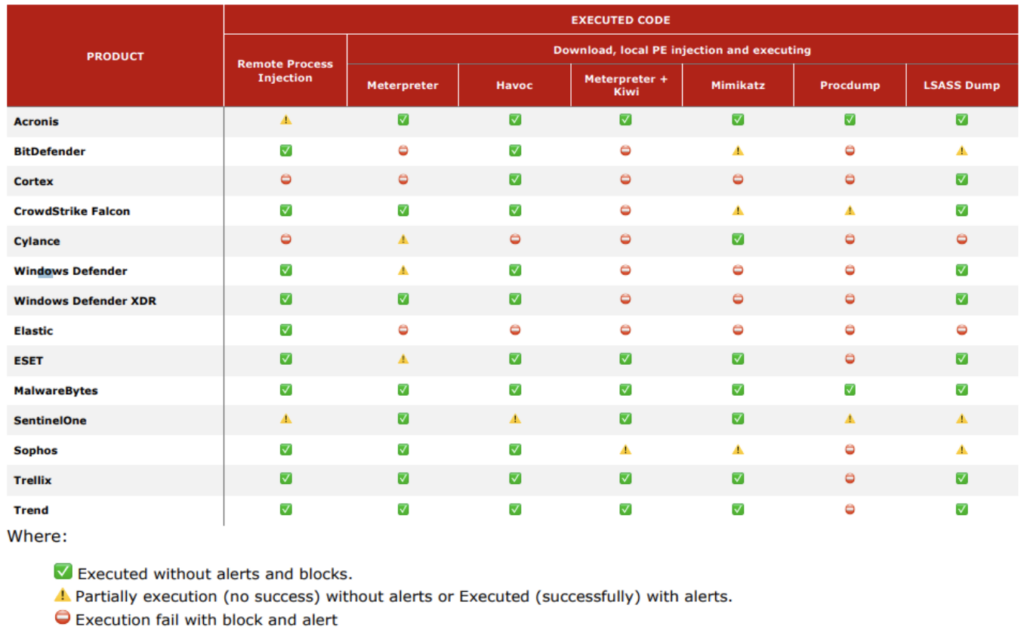HookChain: A New Approach to Bypassing EDR Solutions

Background
Cybersecurity risks in today’s quickly changing digital environment are getting more complex and challenging to identify. As organizations strengthen their security measures with Endpoint Detection and Response (EDR) systems, malicious actors persistently devise novel methods to evade these defenses. One such invention is the HookChain method, which challenges conventional cybersecurity techniques by providing a fresh way to get around EDR solutions.
This article breaks exactly what HookChain is, how it works, and why it marks a key advance in the ongoing battle between security professionals and threat actors.
The Evolution of Cyber Threats:
It is more important than ever to safeguard digital infrastructure against cyberattacks since businesses are depending more and more on it. Systems for endpoint detection and response, or EDR, have become indispensable for protecting against various online threats. EDRs provide advanced functionality like threat detection, containment, and remediation while keeping an eye out for malicious activity on endpoints (servers, laptops, and desktop computers).
However, as EDR systems develop, so do the strategies that attackers employ to get around them. Malware authors and hackers are constantly searching for novel approaches to evade detection. This is where the recently released evasion method HookChain comes into play.
HookChain Technique:
An advanced evasion method HookChain is intended to go around conventional EDR solutions. Through the use of indirect system calls, dynamic System Service Number (SSN) resolution, and Import Address Table (IAT) hooking, HookChain avoids detection without needing changes to the source code of applications or malware.
Put more simply, HookChain modifies the way a program communicates with the Windows operating system by rerouting calls to particular Windows subsystems in a manner that is undetectable to the majority of EDRs. To identify unusual activity, EDRs typically keep an eye on the Ntdll.dll library, a crucial point for gathering telemetry data. By making sure that API calls within an application happen stealthily and get through the EDR’s monitoring mechanisms, HookChain takes advantage of this.
It helps to learn a little bit about Windows process dynamics and how EDRs watch over them in order to comprehend how HookChain gets around EDR systems.
HookChain’s ability to intercept system calls without sounding an alarm is the key to its efficacy. The Windows subsystem that facilitates communication between user applications and the kernel, Ntdll.dll, is largely monitored by EDRs. Through the use of dynamic SSN resolution and indirect system calls to manipulate the execution flow, HookChain makes sure that all executed API calls are kept out of the sight of EDRs.
Below is a condensed summary of the primary methods that HookChain employs:
- IAT Hooking: To intercept function calls made by Windows applications, HookChain modifies the Import Address Table (IAT). It effectively avoids using EDR hooks by rerouting these calls such that HookChain’s implant handles them instead of the real Ntdll.dll.
- Dynamic SSN Resolution: Windows uses System Service Numbers (SSNs) to conduct certain system calls. HookChain dynamically resolves SSNs so that their actions are undetectable on various Windows versions.
- Indirect Syscalls: HookChain employs indirect syscalls to further obfuscate its operations and make it more difficult for EDRs to identify its existence than it does by directly triggering system calls.
When combined, these techniques produce an intricate evasion layer that makes HookChain especially successful in evading detection by EDRs.
Working of HookChain:
The HookChain technique is implemented using a methodical approach:
- Dynamic Mapping of SSNs: The first step involves using dynamic mapping techniques, such as Halo’s Gate, to resolve SSNs. This process allows the attacker to identify the appropriate system calls needed for their objectives without relying on static values.
- Mapping Base Functions: Once the SSNs are resolved, the next step is to map essential base functions that will be used in subsequent actions.
- Hooking the IAT: The attacker then proceeds to hook the IAT of the target application. This involves replacing the addresses of the original functions with the addresses of the custom functions that have been designed to evade detection.
- Testing and Validation: After implementing the HookChain technique, functional tests are conducted to ensure that the hooks are transparent in the call stack and that the application behaves as expected without raising alarms in the EDR systems.
Testing Methodology and Limitations:
To ensure the reliability of the HookChain technique, a rigorous testing methodology was employed. The following premises were established:
- A unique and identical codebase was used for all tests, compiled in a 64-bit Windows environment using GCC.
- The same Portable Executable (PE) file was executed across all tested environments, ensuring consistent behavior and hash values.
- The application was developed without any bypass or evasion actions, allowing for a clear assessment of the HookChain technique’s effectiveness.
The results of the tests conducted using the HookChain technique were promising. The technique demonstrated an effectiveness rate of up to 71% in bypassing various EDR solutions, with some products achieving a 100% success rate in evasion. This highlights the potential of HookChain as a powerful tool for attackers seeking to evade detection.

Here are the detailed result statistics from the tests conducted with low-privilege users:
Total Tests Conducted: 56
Tests Mitigated (identified or blocked): 32 (57.14%)
Successful Tests Without Identification or Blocking: 24 (42.86%)
Successful Tests With Identification or Blocking: 32 (57.14%)
Additionally, when considering the effectiveness of the HookChain technique, it achieved a 64.29% effectiveness in bypassing security during tests with more sophisticated attacks.
57.14% of the EDR solutions analyzed (8 out of 14) were able to identify or block the actions performed by the HookChain.
Implications for Security:
The emergence of the HookChain technique poses significant challenges for cybersecurity professionals and EDR vendors. As attackers continue to refine their methods, organizations must adapt their security strategies to account for these advanced evasion techniques. This may involve:
- Enhancing EDR Capabilities: EDR vendors must continuously improve their detection mechanisms to identify and respond to sophisticated evasion techniques like HookChain. This may include implementing behavioral analysis and machine learning algorithms to detect anomalies in application behavior.
- Rethinking Security Posture: Organizations should adopt a proactive approach to cybersecurity, focusing on threat hunting and incident response to identify potential breaches before they escalate.
- Collaboration and Knowledge Sharing: The cybersecurity community must work together to share knowledge and insights on emerging threats and evasion techniques. This collaboration can help organizations stay informed and better prepared to defend against sophisticated attacks.